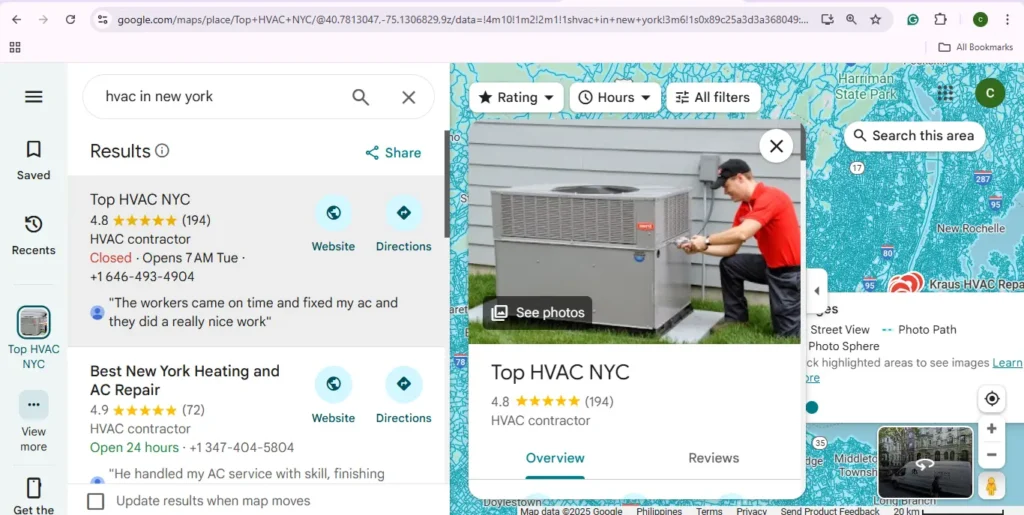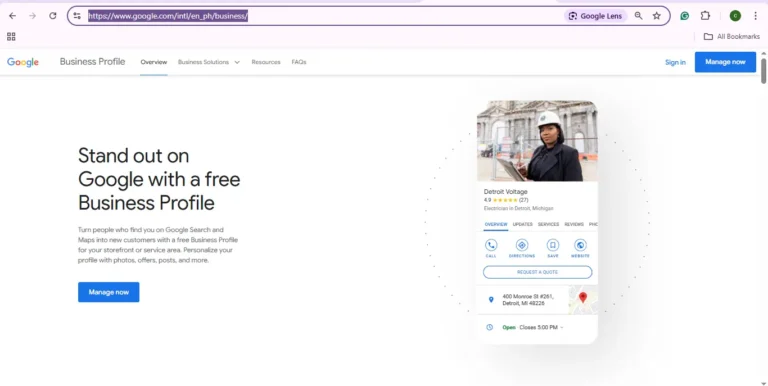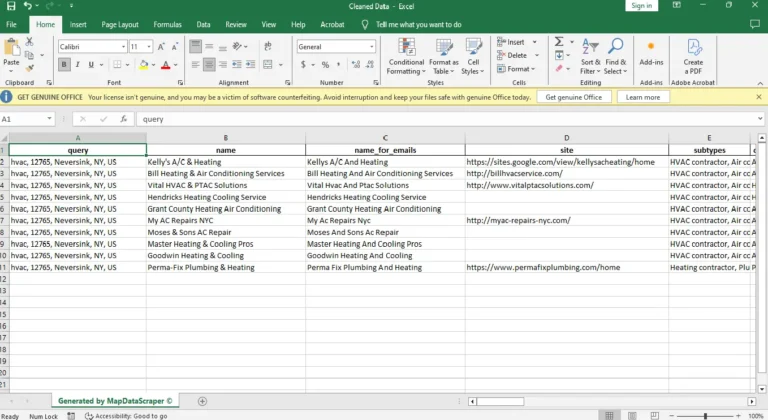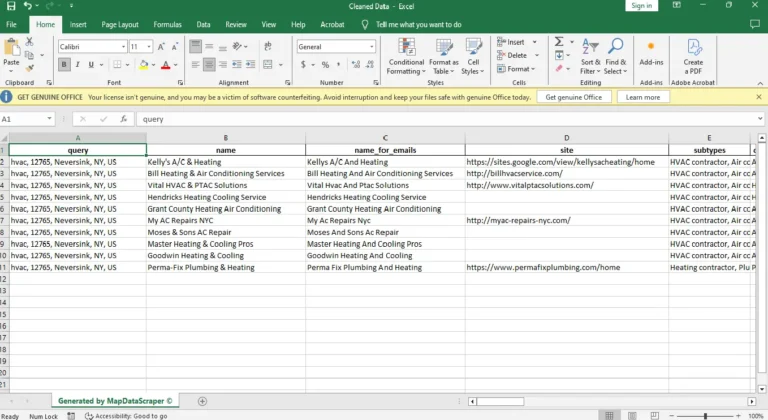Extracting Business Data by Google Maps
Table of Contents
Business Data from Google Maps
Google Maps is undoubtedly one of the major sources of location-based information. It provides sufficient business data used for strategic planning, product development, and producing actionable insights. However, due to the vast amount of data, there is a possible scenario of information overload. This often leads to the extraction of irrelevant, outdated, or misleading information that could potentially create a negative impact on business operations.
So why continue using Google Maps data? Are there better alternatives? Despite concerns about data overload and occasional inaccuracies, users continue to prefer using Google Maps as their go-to resource for location and business intelligence. However, Google Maps already anticipates such dissatisfaction among its users; that’s why continuous innovation has taken place, with expert inputs and, more importantly, embracing automation for accuracy, reliability, and targeted data extraction.
Whether you’re a market analyst, marketeer, business owner, or simply a start-up entrepreneur, you look forward to valuable business intelligence to elevate your competitive edge in the market. But to do that, you take Google Maps data to cross-reference information from different online sources and manually input everything into paper or a spreadsheet.
However, another challenge would arise: you need to validate every entry that includes the business name, category (i.e., type of business), addresses (if applicable), phone number, and so on. Multiply that by hundreds or thousands of entries, and it would be costly, time-consuming, and inefficient. This can hardly sustain a competitive environment in the market landscape.
The smarter solution for Google Maps is to integrate data extraction with top-notch scraping tools (Outscraper, MapDataScraper, etc.), which utilize API integration to ensure GDPR and CCPA compliance, and provide structured and enriched data. Additionally, it is an automation tool best suited for bulk data extraction, offering minimal cost and labor. It is also used to improve CRM and enhance strategic planning and actionable insights for businesses to leverage.
Types of Data that can be Extracted
Google Maps provides an extensive data source of spatial data, including business listings, addresses, competition in the market, types of businesses, and more. It is also used to extract basic fields:
Business Name
- The business name is the official title that is found in Google Maps. It often reflects the branding (trademark), a landmark for customers, and differentiates itself from other competitors in the area.
Category
- A category is an indication that tells what kind of products or services were offered by businesses. Google Maps uses it to label certain businesses for targeted leads and filters suited for its users.
Address
- It is the physical location that entails the full details of the street where the business is located. Google Maps provides information to users who utilize it for geotargeted marketing, logistics, delivery routes, and more.
Phone Number
- It is usually the landline or mobile number used in the business. Such information is crucial for validating customers who are actively using these numbers to avoid outdated contact information and have a more accessible channel for cold calling, sms campaigns, etc.
Website
- A website is a digital landmark of businesses; it is usually the landing page or official site that portrays what the business is all about. It gives information for both customers and data for marketing analysis.
Operating Hours
- Operating hours show the operational hours of businesses ( eg, 8:00 am-5:00 pm). It helps with the timing for outreach from telemarketeers and is crucial for information dissemination to customers, especially on seasonal or regular shifts of the business.
An enriched data field allows customers to have more relevant information that enhances data analysis and strategic campaigns for effective actionable insights. Geo-targeted segments are also utilized to improve Customer Relationship Management (CRM). Enriched data fields are as follows;
Star Ratings and Number of Reviews
- Star ratings and the number of reviews indicate the public perception and measures of public trust in businesses. Star ratings are usually measured from the scale of 1 to 5 (1 is the lowest and 5 is the highest). Thus, it is used for targeted marketing, taking priority on a higher scale or giving intervention to a much lower scale.
- The number of reviews depicts the frequency of customer engagement and foot traffic. It also gives a picture of how successful marketing campaigns can be that gain traction, or simply can identify which products and services are suitable in that location.
Photos
- Photos are the representation of branding, customer experience, and visual aids. Businesses and customers alike showcased products, services, store ambiance, etc.
Question & Answer
- Part of data enrichment that answers customers’ queries regarding products, services, concerns, or sentiment about the business itself. It improves CRM and allows customers to feel that they are heard and their sentiments are valued.
Amenities
- Amenities are the things offered to customers to improve the customer experience. Free Wi-fi, Wheelchair availability, or payment options are all suited to satisfy customer preferences. These tags help with branding and improve customer engagement.
Popular Times and Visit Durations
- Google’s way of analyzing foot traffic during holidays, events in the area, and how long the visit lasts. It helps in preparation for long shifts, marketing, and logistics. Thus, optimizes marketers’ strategic planning and competitive edge among the competition.
Business Description and Updates
- Businesses’ initiatives to post updates and descriptions of the recent changes or any promotions within the business. It improves their brand visibility and updates their presence in Google Business Profile (GBP).
Google Place ID
- Google Place ID is a unique code assigned by Google to its designated location. It is used for API integration, data enrichment, and cross-platform tracking. Thus, it is used to synchronize for CRM tools and other scrapers for analytics and mapping.
Google Maps Data Scraper
Unlock valuable business data with our powerful suite of Google Maps scraping tools. Extract leads, reviews, photos, emails, and contacts without coding — fast, easy, and reliable.
Step-by-Step Process to Extract Business Data
Extracting business data requires precision and a reliable scraper (such as Google Maps Scraper, Outscraper, or MapDataScraper) to obtain high-quality business data. The following ensures the data quality that fuels business and location intelligence.
Use Google Maps Scraper
- Google Maps Scraper is a tool that collects business data extracted from Google Business Listings. It is usually done manually and compiles it to CSV or Excel format for data analysis, lead generation, or outreach.
Define Your Target Market
- Defining your target market helps you identify the niche you are trying to search. Thus, it filters to what specific industry (HVAC, restaurants, clinics, etc), geographic location ( NY, CHI, etc ), and lead criterion (ratings, with active emails, etc.) For instance, an HVAC in New York that has customer reviews.
Extract Business Data
- Extracting business data revolves around the business name, category, addresses, phone number, website, operating hours, etc, which are readily available online. It is used to provide business intelligence, which is integrated with data analytics, marketing, research, and sales.
Clean and Validate
- It is the most crucial part in extracting business data. The data should undergo cleaning and validation. Cleaning removes errors, duplicates, formatting issues, and missing fields. Validation ensures that the data is accurate, up-to-date, and relevant to your business.
Enriched Data
- Enriched data refers to additional information that adds depth to the scraped data. Thus, it provides deeper insights into business, allowing its users to segment, qualify, and target the market more effectively. It also enhances data analytics for effective marketing and actionable insights.
- Moreover, it is accessible by using powerful scraping tools (Outscraper, MapDataScraper, Bright Data, etc) that automate scraping and use API integration to ensure GDBR and CCPA compliance. These tools can extract business data in large quantities with less time and effort, in contrast with manual scraping.
Use Case
Google Maps serves as a major location-driven data provider. Utilizing its potential to be a backbone for actionable insights and data analysis. So the “Use Case” of Google Maps shows us the real-life application of location-based information.
Local Search Engine Optimization (SEO)
Local Search Engine Optimization (SEO) gives local businesses digital visibility. When customers search for establishments (restaurants, clinics, stores, etc), Google Business Profile will be captured in Google Maps, featuring the business name, phone number, addresses, reviews, ratings, and more.
In addition, a significant contribution of local SEO is that it allows businesses to have a higher ranking in search engines, leading to more traffic and customer engagement. Thus, it gives more exposure through customer feedback, ratings, reviews, even images or video content. And converts these engagements to paying customers.
Brand and Marketing Promotions
Brand and marketing promotions engage customers through visual and tangible representations of the brand (logo, taglines, etc.), as well as campaigns and ads as marketing strategies. And as for Google Maps, it highlights categories, trends (seasonal),location-based events, and site location for a physical store.
In addition, the updates on Google Business Profile give an additional promotion for companies that showcase their specific offerings (products and services). Google Maps utilizes this information to give business insights and strategic planning for effective marketing and brand visibility.
Operational Planning and Logistics
Business operational planning and logistics are highly dependent on Google Maps location intelligence. It improves the proper designation of routes intended for delivery and the sourcing of materials for production. Thus, it also uses market mapping in order to shorten travel time for more efficient operation and immediate response to emergencies and other concerns.
Ultimately, Google Maps can be utilized for market opportunity mapping that helps businesses choose a high-potential space for expansion and meet the segments that have high income potential but are not yet served.
Customer Service and Information
Google Maps is commonly used as a navigational tool to locate physical stores. It engages customers through this service to provide information about the businesses that have specific amenities, services, or products offered. Thus, it allows customers to use it for queries and could potentially improve CRM.
Moreover, businesses use questions and answers as a leverage to address individual concerns of customers. It opens up opportunities to improve product management and innovation in its offerings.
Competitor Analysis
Competition in the market is inevitable, so businesses use Google Maps to locate the competition within the area. It also allows businesses to identify the gaps within segments that are underserved and neglected.
Finally, businesses use Google Maps data to analyze reviews and ratings from competitors’ products and services. It shows the likes and dislikes of customers and helps to better understand how to bridge the gap and create an opportunity to have a distinct solution to the existing problem.
Google Maps Data Scraper
Unlock valuable business data with our powerful suite of Google Maps scraping tools. Extract leads, reviews, photos, emails, and contacts without coding — fast, easy, and reliable.
Conclusion
Google Maps is indeed one of the best sources of location-based data. It may face some issues of data overload and occasional inaccuracies, but the continuous effort to improve and link it to Google Business Profile provides updated and relevant data from businesses themselves. Thus, integration of the API through Outscraper and MapDataScraper gives an enormous advantage due to automation.
In addition, the utilization of these powerful tools ensures data quality, scales data extraction, and creates an enriched database and structured data for easier data analysis and strategic planning. Enhance Business Intelligence and location intelligence, which is crucial in competing in the market landscape.
Overall, Google Maps is a highly effective tool for spatial analysis, which is enhanced by powerful scraping tools. Who delivers data automation, validation, and strategic utilization of use cases to real-life scenarios. It is highly beneficial for businesses to have a reliable database that enhances strategic marketing and actionable insights that is sustainable and effiecient.
FAQ
Most frequent questions and answers
A Google Maps Data Scraper is a tool that automatically extracts business details from Google Maps listings. This includes business names, addresses, phone numbers, websites, categories, ratings, and more — perfect for lead generation, market research, and business directories.
Yes! You can easily download the extracted data in popular formats like CSV or Excel, making it ready for lead generation, CRM upload, or email outreach.
With our Google Maps Data Scraper, you can extract:
Business Name
Address (street, city, postal code)
Phone Number
Website URL
Business Category
Rating and Number of Reviews
Latitude & Longitude
Opening Hours (if available)
No coding skills are required! Our tool is beginner-friendly with a simple, intuitive interface. Just enter your search keywords or location, run the scraper, and download your data in CSV or Excel format.
There’s no strict limit — you can scrape thousands of business listings per run, depending on your chosen subscription plan and Google Maps result availability for your search query.






